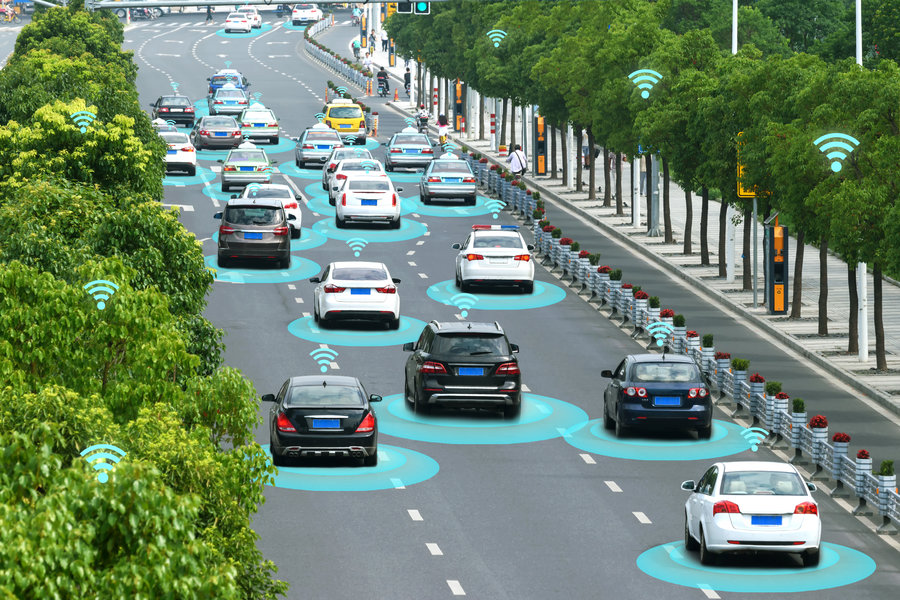
The results of the testing of autonomous and assisted driving functions and services of the 5G-CARMEN project, funded by the European Commission and coordinated by the Bruno Kessler Foundation, were presented on June 22. The tests were conducted on highways on cross-border scenarios (the two borders Italy-Austria and Austria-Germany) to prove the continuity of the 5G service made available to drivers driving from one country to another. The project is an important piece in the evolution of smart mobility in Europe and confirms Trentino's commitment to technological and highly innovative programs at the international level.
5G-CARMEN: the project
Focusing on the Bologna-Munich corridor (600 km, over three countries) the objective of 5G-CARMEN is to leverage on the most recent 5G advances to provide a multi-tenant platform that can support the automotive sector delivering safer, greener, and more intelligent transportation with the ultimate goal of enabling self-driving cars.
The key of the 5G-CARMEN innovations are centred around developing an autonomously managed hybrid network, combining direct short range V2V (vehicle to vehicle) and V2I (vehicle to infrastructure) communications with long-range V2N (vehicle to network) communications. The platform employs different enabling technologies such as 5G New Radio, C-V2X (Cellular vehicle to everything), and secure, multi-domain, and cross-border service orchestration system to provide end-to-end 5G enabled CARMEN services.
Learn how the 5G-CARMEN platform for autonomous and assisted driving works
5G-CARMEN: applications
Functioning and applications of the technology developed by the 5G-CARMEN project:
- 5G-CARMEN provides a platform through which vehicles are able to exchange speeds, positions, intended trajectories/manoeuvres, and other helpful data;
- The on-board systems then use this information to derive an optimized driving strategy or a recommended course of action to follow in order to actively optimize traffic flow and avoid dangerous situations;
- Equipped cars can share the collected information with other equipped cars in the range through direct communication or infrastructure-mediated communications (V2N2V);
- Multi-access edge computing (MEC) running services may collect the shared information on a larger scale and support the cars (drivers or onboard automated driving systems) with recommendation messages carrying suggestions about the behavior to follow in order to achieve a safe and optimized management of the ongoing situations.
The A22 tests
Two Stellantis-CRF vehicles demonstrated the ability to perform cooperative lane manoeuvres and lane changes using connected, assisted and automated driving along the 5G corridor and at the borders between Italy-Austria and Austria-Germany (Brenner, Kufstein). Cooperative manoeuvres are enabled by an extended perception of the vehicle, sharing speed and position of the vehicle itself and of the other vehicles, that are monitored by the on-board sensors. Data sharing with surrounding vehicles takes place thanks to the 5G cellular network and also to the C-V2X direct communication.
A centralized connected and automated lane change is also tested in the Kufstein border between Germany and Austria. Three BMW vehicles sent their position, speed and intention of a lane change manoeuvre via a 5G network to a BMW Manoeuvring Service which monitors the state of the traffic, manages the distance between vehicles, generates recommended speed for all of them and determines the most suitable moment to execute a lane change (when requested).
The experiments were carried out thanks to the collaboration of:
- FBK: project leader
- TIM, Magenta and Deutsche Telekom: network operators, provided 5G connectivity and Edge Computing infrastructure
- Nokia, Qualcomm Technologies, Inc. NEC and INWIT: technology participants
- A22 Autostrada del Brennero SpA
Click here and discover all partners in the 5G-CARMEN consortium.





